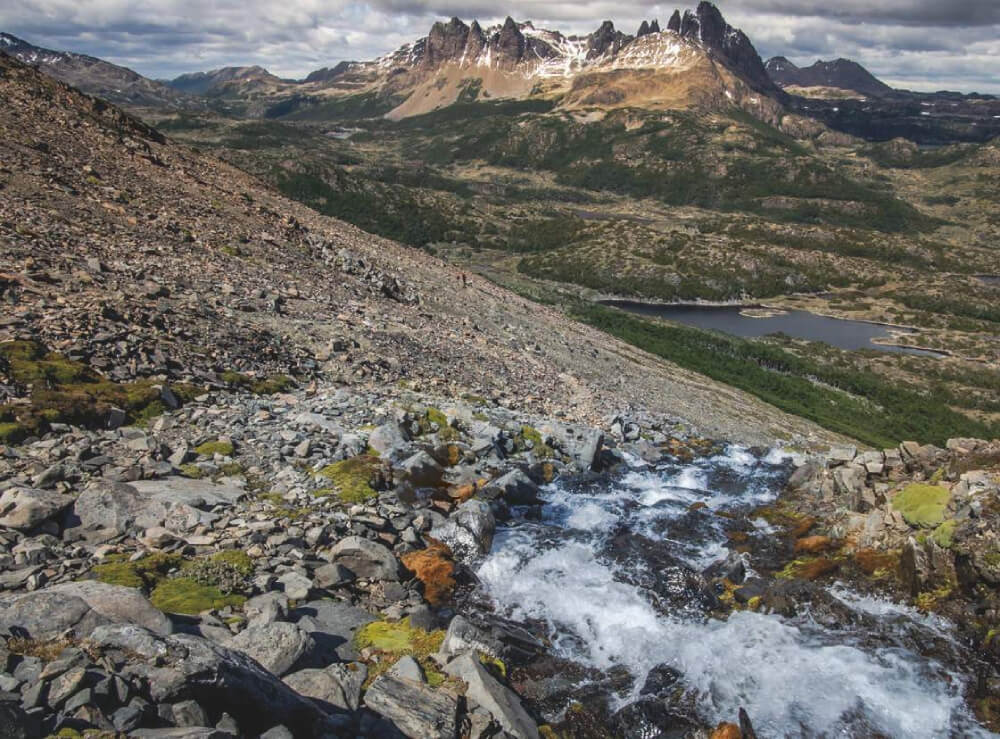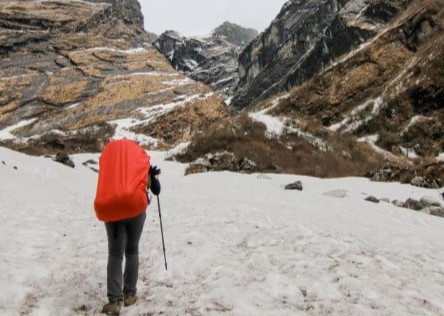Summary
General Information
Cerro La Campana
Acceso con restricciones
Location: Chile, Región de Valparaíso
Area: Cordillera de la Costa, Olmué
Nearest city: Olmué
Altitude:
1880 m.
1828 m.
Year First ascent: 1833
First ascent:
Charles Darwin y compañía
Geographic position:
Lat: -32° 57' 12.9" (WGS 84)
Lon: -71° 7' 13.3"
Media Montaña
Área protegida
Routes
Summit Book
Last Update
Mountain
Cerro La Campana (1880 m.)
Author: Paulo Cox
Updated at 06/05/2016
Introduction
Introduction
The summit of the Campana (campana = bell) is perhaps the best place to get the picture of what is central Chile. It is located in the Cordillera de la Costa, in an area with a very confusing geography. The Central Valley (which separates the Andes from the Cordillera de la Costa) is so narrow, and so many secondary mountain chains cross it, that it is not quite clear what belongs to the Cordillera de los Andes and what doesn´t. Only in winter does the snowline show clearly who is who.
Despite this confusion, the altitude of La Campana and its relative distance to the West, make it a natural viewpoint of the other peaks in the area. Towards the East great part of the Central Andes range may be observed, from the Mercedario in the North to the mountains in front of Rancagua in the South, with very few summits being left out of this impressive landscape. From La Campana, for example, even peaks like Pochoco and Manquehue (classical day hikes of the Santiago Valley, with altitudes under 2000m) can be easliy spotted. Towards the East, at almost the same latitude, the Aconcagua stands high in the horizon. But towards the West, when the coastal fog has cleared, the Pacific Ocean shows itself (according to Darwin´s story, he even saw the masts of the biggest vessels anchored in the Valparaíso Bay). But not only mountains add to the attractions of La Campana. As said before, the summit of La Campana is a place to get acquainted with all that´s characteristic of Chile´s central zone. To the North there is the fertile Quillota Valley, with its characteristic microclimate; to the South, the Olmué Valley.
The division between the slopes with North and South exposure is evident: it is nature who takes charge of showing the difference when the from the summit we see to one side of the summit ridge the desertic place of Palmas de Ocoa and to the other side the thick forest and beautiful oaks which grow near the creek. In winter, during the months of June and July, the sunrays never reach the South facing slopes, by which the summit is normally gained, and the humidity coming from the Pacific keeps such face always green. On the North side, instead, it is dry, with plenty of sand and gravel, and splashed with thousands of millenary palmtrees. Both places are exceptional and well worth a visit.
Respecting its name, it is clear that it comes from the bell shape it has, specially when looking at it from Quillota.
Darwin and La Campana*
"We spent the day on the summit, and I never enjoyed one more thoroughly. Chile, bounded by the Andes and the Pacific, was seen as in a map.", wrote the young Charles Darwin in his diary, after spending two days in the range which separates the Quillota and Olmué valleys. Darwin had been travelling around great part of the central zone, and on August 17, 1833, together with two guides, he reached the summit of La Campana. The brief excerpt of Darwin´s diary describes very well the summit feeling of this mountain: a visit to La Campana is a much enjoyable adventure which demands very little in change.
In August 17, 1935, ths Scientific Society of Valparaíso, the British Settlement and admirers of the English naturalist, placed on the granite headwall of the hill, a plate in his tribute, and written on it is the excerpt above mentioned. Today, the same as many places, the plate is covered with paint and writings allusive to unknown names and meaningless dates, in what has been called the "inmortales baratos" (cheap immortals). The truth is that it isn´t cheap at all (at least from a community point of view), since organizing to clean up the rocks of all those mountains that have been visited by the "inmortales baratos", is certainly an undertaking which demands a great effort.
Darwin took two days to climb the mountain. He left at dawn, the 16th of August, 1833, accompanied by two "huasos" (local cowboys) provided by the administrator of the "Hacienda de San Isidoro", located at the base of the mountain, in the Quillota Valley. The first part was done by horse, up to the "Auga de Guanaco" spring, along the northern slopes. At that point, both faces, North and South, could already be distinguished: "During the ascent I noticed that nothing grew on the northern slope but bushes, whilst on the southern there was a sort of bamboo, about 15 feet high.".
It is at the "Agua de Guanaco" spring that Darwin and his escorts stop their march to spend the nigh:
"The setting of the sun was glorious; the valleys being black, whilst thw snowy peaks of the Andes yest retaines a ruby tint. When it was dark, we made a fire beneathsa little arbour of bamboos, fried our charqui (or dried strips of beef), took our maté, and were quite comfortable. There is an inexpressible charm in thus living in the open air. The evening was calm and still; the shrill noise of the mountain bizcacha, and the faint cry of the goatsucker, were only occasionally to be heard."
The following day, the expeditionaries reached the summit. Darwin wrote:
We spent the day on the summit, and I never enjoyed one more thoroughly. Chile, bounded by the Andes and the Pacific, was seen as in a map. The pleasure from the scenery, in itself beautiful, was heightened by the many reflections which arose from the mere view of the grand range, with its lesser parallel ones, and of the broad valley of Quillota directly intersecting the latter. Who can avoid admiring the wonderful force which has upheaved these mountains, and even more so the countless ages which it must have required, to have broken through, removed, and levelled whole masses of them?”
The expedition still spent another night beneath the bambus, half way between the summit and the valley.
*Source: Darwin, Charles, "Voyage of the Beagle".
 Sign the summit book
Sign the summit book













